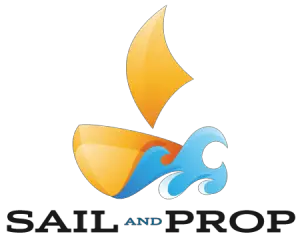In our last article, my fascination with windvane self steering took me on a 2,000 nautical mile sea trial to really test the Monitor windvane in its element (Read the article “Sea Trialing a Monitor Windvane – a Review”). What I found was both inspiring and disappointing at the same time. The Monitor did great for the first three quarters of the voyage, but gave up the ghost on the final leg of the journey up the Pacific Coast of Central America.
I liked the Monitor winvane a lot, but I wasn’t quite finished with my journey to find the perfect windvane. Was there another design that could hold up better to the open ocean? How would a different type of windvane perform in the kinds of conditions that I had encountered on my last voyage? The more I thought about it, the more I knew that my quest to find the ideal windvane was far from over.
I kept my eyes out for another chance to “test drive” a different kind of windvane on a blue water voyage, and it wasn’t long before the perfect opportunity came my way. A friend needed help moving an older 28 foot sailboat from Ecuador to Tahiti and wanted to know if I could fly down in a week. The boat was well set up for this kind of voyage, and she had been outfitted with an Aries windvane for self steering purposes.
As soon as I heard about the Aries vane, I knew that I had to sign on for this delivery. I packed my bags, and a few weeks later I was again at the helm of a small boat, headed out to cross five thousand miles of open ocean with just the Aries windvane as my only crew.
Introduction to the Aries Windvane Self Steering Design
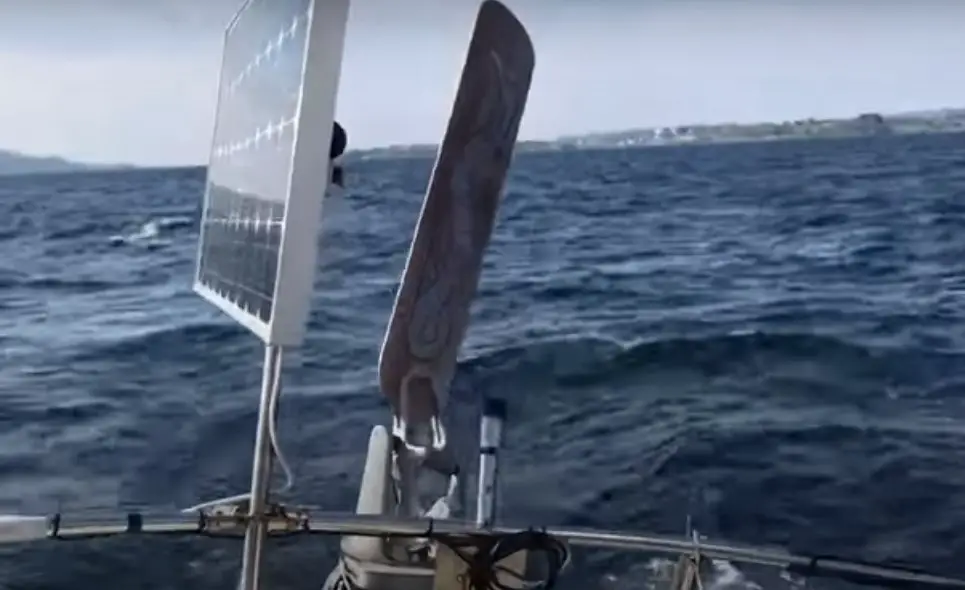
The Aries was introduced very early into the commercial windvane market, back in the mid sixties. They are quite possibly the earliest model available on the market that is still sold today. While the Aries has lost some popularity to newer, fancier and much more expensive windvane models, there is something to be said for a design that remains almost unchanged for over fifty years. Many new windvane designs come and go, launched with much fanfare only to fade away in a short period of time. The Aries windvane still has a very dedicated following, and a handful of very experienced sailors who will accept no substitute.
I was excited about giving the Aries windvane a go because I had recently heard about how one unit in Western Australia had recently completed its tenth circumnavigation (many of which were via the Southern Ocean and Cape Horn) and was still going strong. That’s well over a quarter of a million miles on the high seas. Considering the fact that my latest Raymarine autopilot couldn’t make it five miles across the bay without breaking down at least twice along the way, I was quite impressed to hear these statistics, which were backed up by perhaps the most experienced solo sailor in recent history – Jon Sanders.
The Aries windvane is built around a rugged aluminum frame, similar in many ways to the Monitor (Except the Monitor is made from stainless steel), but the design has a more circular shape, and the frame itself is more compact. As for the servo pendulum setup, it is again very much like the Monitor, with the paddle swinging down into the water below the frame.
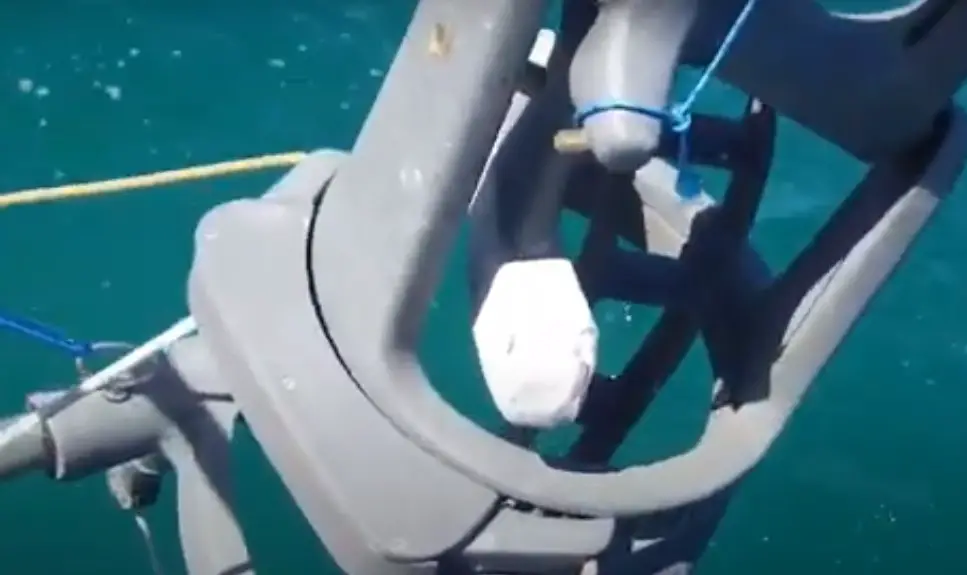
(If you want to learn more about how windvanes work, read our previous article “Windvane Self Steering – A Review”)
One notable difference was that the Aries used a gear system to adjust the vane direction, so that when you want to adjust course you pull a line that moves the vane clockwise or counterclockwise one notch at a time. Each notch represents ten degrees on the compass, which is usually precise enough for maneuvers at sea. I never had any issues with this setup, although I could see how it may irritate perfectionists who want to hold an exact course down to the degree.
Of course, you can always disengage the windvane, set a course with the wheel or tiller and re-engage the windvane if necessary. I sometimes steered this way while tacking or making large adjustments to the course, because I had more control over the helm.
Before departing on the long crossing, I took the boat out for a short day sail outside the harbor. The wind was a pleasant 15 knots with smooth seas, perfect conditions for a sail. I hoisted the main and jib, and engaged the windvane. The Aries worked splendidly, keeping the boat on course just as advertised, and I was quite impressed. I named the Aries Wilson, after Tom Hank’s companion in Cast Away, since he was to be my only crew member on the long journey west. I took an instant liking to Wilson, although our relationship was to be tested thoroughly on the voyage to come.
The Sea Trial – How the Aries Performed at Sea
The first few weeks out of Ecuador we encountered exceptionally light winds for this time of year. The cause was the much dreaded El Nino, the occasional reversal of the Humboldt current that causes the trade winds to die off and throws the entire Pacific Ocean ecosystem out of whack. This El Nino event was the most severe that had been recorded in recent history.
For most of the vessels sailing the Coconut Milk Run to the South Pacific that year, El Nino was a great inconvenience that meant they had to motor the first thousand miles or so on a route that typically could be relied upon for perfect trade wind sailing conditions. For me, on a tiny engineless sailboat, I had no option but to wait for the wind, and try and take advantage of every breeze that appeared, no matter how brief.
In these light winds, the Aries was of little help in keeping the boat on course. Even when the wind was almost nonexistent, there is almost always a residual swell on the open ocean, which causes boats to rock back and forth. Without the pressure of wind on the sails to counter the weight of the keel moving back and forth, the motion can become quite bad. In fact, the motion is often worse on a boat that is being thrown around in a calm than in a reasonably strong gale.
With little forward motion through the water, the servo pendulum was unable to get the energy it needed to steer the boat. So in the light airs early on in the passage, I had to hand steer if I wanted to keep the boat moving in the right direction. After much experimentation in calms and during frequent squalls, I found the windvane could start to work in six or seven knots of wind, and it could be relied upon fully once the wind strength reached ten knots.
During this time caught in the doldrums, the calm winds were punctuated several times per day – or more often at night – by brief but very violent squalls. When a squall hits, it’s normal procedure to douse all the sails, because the wind can reach forty knots or more in a matter of minutes and cause damage to the rig. I was so sick of waiting for wind, however, that I was determined to use the squalls to propel us in the right direction, even if they only lasted for a few minutes.
When a squall hit, instead of dropping all sail entirely I switched to storm canvas and set the windvane to steer us on a course to the southwest (My destination was to the west, but there was a belt of wind about 100 miles south of us that I wanted to reach to get sailing again).
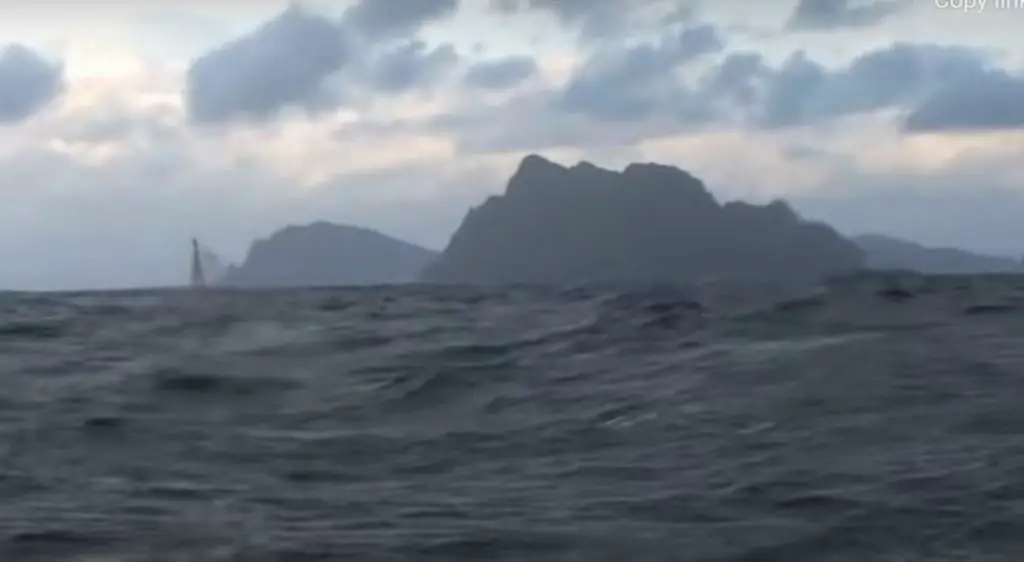
Even in some exceptionally bad squalls when the wind hit forty five or even fifty knots, the Aries had no problem keeping us on course. Squalls come up so fast that there is no time for the massive swells that usually accompany 50 knot winds to develop, so we didn’t have to worry too much about dangers posed by the waves – just by the wind.
The problem was that in a squall the wind would sometimes change direction 180 degrees in a matter of seconds. That’s when the windvane became essential, because I was too busy handling the sails to hand steer at the same time. Even though we usually only made a mile or two of progress in a single squall, the windvane was essential to be able to change the sails fast enough to move in the right direction at all.
After three long weeks stuck in the doldrums, we finally broke through to the trade winds about 300 miles southwest of the Galapagos Islands. Now we were really sailing!
I was excited to really get Wilson properly steering the boat, to see how an Aries windvane performed over long periods of time. On my last windvane “test drive”, the Monitor vane I had been using broke down after 1500 miles, which meant for the last leg of the journey I had to hand steer much more than I would have liked. We still had over 3,000 nautical miles to cover before we arrived in Tahiti, so I was curious how the Aries would hold up over the long run.
When the trade winds first set in, the wind was on our port quarter, meaning we were sailing on a broad reach, which is an easy enough point of sail for most windvanes to handle. As we worked our way further west, the prevailing wind moved more to the north, meaning we had to sail directly downwind. This is a trickier point of sail for any self steering system to manage, but I was impressed with how well the Aries kept the boat on course.
The issue when sailing directly downwind (running) is that many boats tend to veer slightly off course, causing the boat to accidentally jibe. It takes a high performance windvane to steer a straight enough course to avoid this, especially in open sea conditions with large swells and chop that can throw the boat off course.
To avoid this problem, I set the Aries to steer the boat just slightly to one side, but set the sails for downwind running, with the mainsail secured to the port with a preventer, and the jib poled out to the starboard with a whisker pole. It worked perfectly. At one point later on in the voyage, I didn’t have to touch the tiller or the windvane for five days. The sails remained full, and the Aries kept us on a perfect course straight for Tahiti.
Another issue on long passages like this can be chaffe or wear on the lines. In the final week of the passage, I noticed that the line connecting the servo pendulum to the tiller was beginning to wear out. In order to avoid a middle of the night maneuver, I replaced it early – before it broke. Aside from replacing the one line, the Aries didn’t need any other maintenance or repairs the entire journey. I was impressed.
Final Thoughts on the Design and Performance
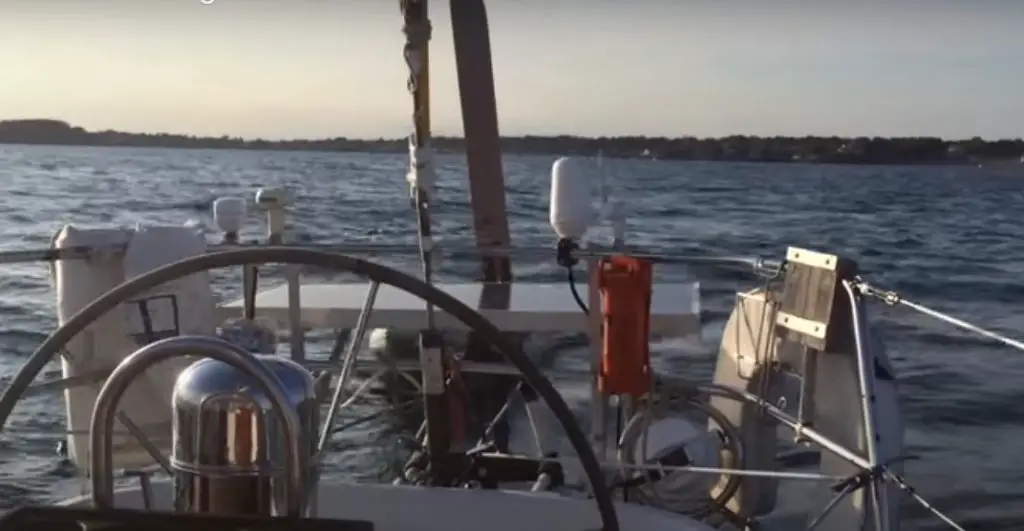
After sailing more than 5,000 nautical miles with the Aries windvane, I was impressed with its ability to hold up to the harsh ocean environment and do its job in all conditions, no matter how rough the seas got. In my book, any piece of equipment that can hold up to an ocean crossing without once breaking down is worth its weight in gold.
Aries windvanes are one of the oldest models that are still commercially available, and it’s easy to be drawn towards the newer and fancier designs. But sometimes there is a reason that a tried and tested classic survives the test of time. Aries windvanes are as solid as a rock, they can survive years of heavy use in all corners of the globe, and for many boats they work just as well as a new Hydrovane or Cape Horn would in the same conditions.
For me, the deciding factor in what windvane to buy for my own boat was my hydraulic steering, which doesn’t work well with a servo pendulum style windvane. I was forced to go with an auxiliary rudder style vane, which gave the nice bonus feature of doubling as emergency steering in case, god forbid, I ever lose my rudder.
That said, if I were to buy a smaller boat and needed to outfit it with the best lower budget windvane I could find, I would absolutely go with an Aries. Dollar for dollar, I truly believe there is no better option available for that low of a price, especially if you are lucky enough to find a used model that has all it’s pieces intact. I have never heard of any sailor replacing an Aries with another model of windvane on the same boat, which says a lot about the quality of construction and design.
To learn more about windvanes and how they work, make sure to read our full length guide “Windvane Self Steering – A Review”. In this article, we explore the benefits and limitations of the most popular windvane models, as well as take a look at the history behind the invention of windvane self steering.
If you are looking for information about how to prepare your boat for your next high seas adventure, there is no better place to find everything you need than at SailAndProp.com. From learning to read the water to discovering the best boating destinations near you, SailAndProp.com has got it all. The best way to stay up to date on our latest material is to sign up to our newsletter, so don’t forget to subscribe today!
